Introduction
One the most difficult things about calculating uncertainty in measurement is finding sources of uncertainty. It is a process that can require you to conduct hours of research.
Seriously! You could waste hours of your life researching sources of measurement uncertainty. It can be even worse if you have no idea where to look or begin.
Luckily, I am here to help you out.
In this guide, I have put together a list of 15 great places you can search to find sources of uncertainty related to your measurement processes. They are sure help you reduce the amount time spent calculating uncertainty.
So, if you interested in estimating uncertainty faster and reducing the number headaches you have while doing so, keep reading to learn the 15 resources that I use to identify uncertainty contributors.
Researching Uncertainty Sources Takes A Lot of Time
When estimating uncertainty in measurement, I spend a lot of time researching sources of uncertainty. It consumes the majority of the uncertainty analysis process.
If you are wondering why I spend so much time identifying contributors, it is because identifying the wrong sources can significantly impact your analysis.
Imagine if you were to identify the wrong sources and spend hours testing to determine the magnitude of the source, only to discover later that you have wasted your time.
It has happened to me; and, it sucks!
So, it is best to spend the majority of your time researching sources of uncertainty to avoid costly mistakes that will ruin your analysis.
Abraham Lincoln may have phrased it best; “Give me six hours to chop down a tree and I will spend the first four sharpening the axe.”

Image Credit: The Business Tutor
I find this statement to be very true. Spend the majority of your time researching the appropriate sources of uncertainty and the rest of the uncertainty analysis will be quick and easy.
Don’t believe me! Stop, and think about it.
With the right tools and data, the calculations to estimate measurement uncertainty are pretty easy and take no time at all.
So, if you spend most of your time finding the right sources of uncertainty and determining their magnitude of influence, the rest should be easy.
If I were breakdown the process of how to calculate uncertainty, it would look like this;
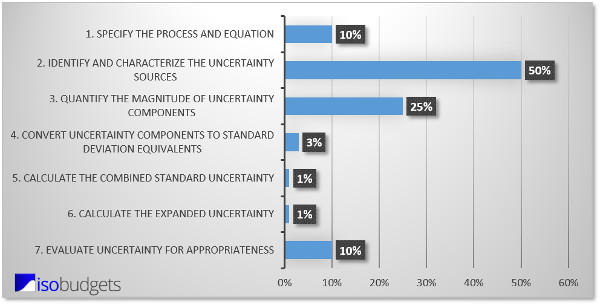
Identifying sources of uncertainty in measurement and determining their magnitude of influence requires nearly 75% of your time.
Trust me. The rest of the process is much easier and quicker to complete.
Think about it. If you have an uncertainty calculator or uncertainty software, estimating uncertainty is a quick and painless process.
The only other lengthy processes are determining the measurement process or equation and evaluating your uncertainty estimates.
Therefore, your main goal should be to identify the right sources of measurement uncertainty and determine their magnitude.
To be effective and efficient, I recommend that you create an archive of your resources. It will save you a lot time next time you have to calculate uncertainty.
Where to Find Sources of Uncertainty
To help you find different sources of uncertainty related to your measurement process, I am going to give you a list of common information sources that I use when estimating uncertainty.
Below, you will find a list of reference material and websites that will help you find different types of measurement errors and contributors to uncertainty faster.
Now, just because you have a list of information sources does not mean that you will not have put in any work.
In fact, the opposite is true.
You will still have to dedicate time and effort to find sources of measurement uncertainty. However, you will be able to find more uncertainty sources faster by focusing your research on relevant reference material.
To get started, check out the list of sources below. Then, click the links to learn more about each information source.
1. Equipment Manuals
2. Equipment Datasheets
3. White Papers & Guides
4. Conference Papers
5. Textbooks
6. NIST Journal of Research
7. NIST Special Publications 250 Series
8. NIST Internal Reports
9. NPL Guides & Publications
10. MSL Technical Guides
11. BIPM Key Comparison Database
12. EURAMET Calibration Guides
13. Metrologia Journal
14. Callab Magazine
15. Measure journal
Equipment Manuals
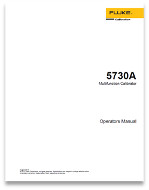
When you want to learn more about your measurement process, the best place to start looking is in the manufacturer’s manual.
Most manufacturer’s typically publish operator, user, and service manuals. Inside these manuals, you may be able to find sources that contribute to uncertainty in measurement.
Typically, the best places to look for sources of uncertainty and error are in the following sections;
• Specification
• Theory of Operation
• Operating Instructions
• Calibration/Performance Test Instructions
Equipment Datasheets
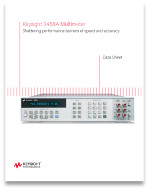
When you want to find equipment specifications quickly, the best place to look is manufacturer’s datasheets.
Datasheets are great places to find equipment specifications and sources of measurement uncertainty. Plus, datasheets allow you avoid searching through manuals just to find the specifications.
When reviewing the specifications, you will typically find details on the operating capabilities and accuracy of the equipment functions. If you pay close attention, you should also see other listed parameters and specifications that affect equipment accuracy.
Commonly found sources of uncertainty listed in datasheets;
• Stability
• Noise
• Temperature coefficients
These additional parameters may be sources of uncertainty in measurement.
White Papers & Guides
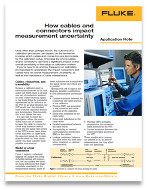
While you are searching manuals and datasheets on the equipment manufacturer’s website, try looking for Guides and White Papers.
Many equipment manufacturer’s regularly publish white papers about their products and their research.
Typically, these documents are used for marketing material, but they can contain some very valuable information; including different types of measurement errors and sources of uncertainty.
So, make sure that you look for white papers and guides. You may be surprised by the information that you find.
Conference Papers
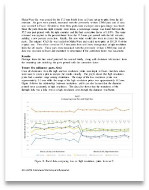
Have you attended any conferences lately? If so, you should know that speakers come from all over to present their papers.
Better yet, most conferences will give you access to all the papers on a CD.
Instead of just throwing the CD in a drawer to never look at it again, try reading through some the papers.
You may be surprised by the information that you find in those papers. Some of these conference papers may contain uncertainty analyses performed for the measurement function you are trying to evaluate.
With this information, you can find sources of uncertainty for your uncertainty budgets.
Remember, you are probably not the first person to perform an uncertainty analysis for your specific measurement discipline. Use the findings of others to help reduce your level of effort. It will save you a lot of time and headaches.
Textbooks
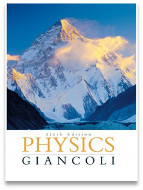
An unlikely source that many people neglect to use when performing uncertainty analysis is textbooks.
As a base line, I think that every calibration laboratory should have at least a Physics and Chemistry textbook in their library.
It is a great resource to have and will surprise you time and time again when performing uncertainty analysis or a calibration that requires a mathematical calculation.
Furthermore, try searching for textbooks related to your measurement discipline. Believe it or not, there are many textbooks out there that contain a lot of information related to your instrumentation and measurement functions.
After college, most people tend to get rid of their textbooks, so you may be able to find them online for cheap. I actually bought an extremely rare textbook on experimentation designs for $1 on eBay.
Additionally, there are many popular specialized textbooks, like Traceable Temperatures, that can be quite expensive (e.g $200 to $400). You just need to take a look to see what you may find.
The information in these textbooks can be very valuable for finding new sources of error and uncertainty.
NIST Journal of Research
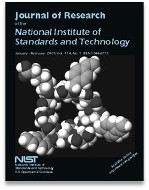
The NIST Journal of Research is an excellent publication for finding sources of uncertainty.
It is an excellent resource for those who know about it.
Not every publication in this journal is about measurement uncertainty, so you may have to do a little research to find what you are looking for.
However, every issue is archived and available online. Best of all, it is free to the public.
So, you should feel free to spend some time researching articles in the NIST Journal of Research. The information that you may find can be extremely helpful for your uncertainty analysis.
NIST SP250 Publications
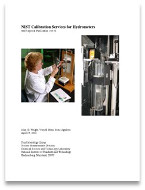
While you are on the NIST website, make sure to review their Special Publications.
The NIST SP250 series are all related to calibrations performed at NIST, and these documents can contain a lot of powerful information. This includes sources of uncertainty in measurement.
Once you have read one of these documents, you will quickly understand that NIST leaves no stone unturned. These publications are very thorough and describe many important details that you will not find elsewhere.
NIST SP250 publications are a great resource when estimating uncertainty in measurement. So, make sure to bookmark their website. You will not regret it.
NIST Internal Reports
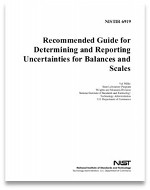
By now, you should know that NIST publishes a lot of content, and they have some more great reference materials for you to add to your library. These are NIST Internal Reports.
This list of resources would not be complete if I left them out.
Currently, there are only a few NIST Internal Reports. Most of them are related to mass and scale calibrations. However, there are internal reports for length and volume too.
These reports contain a lot of good information and provide sources of uncertainty in measurement.
It would be a good idea for you check out these publications.
NPL Guides and Publications
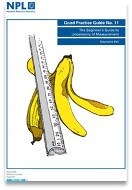
The National Physical Laboratory in the UK has many great publications available to the public. You may be familiar with their “Good Measurement Practice Guides.”
However, they also publish a lot of other guides and reports that you can use when performing uncertainty analysis.
I highly recommend that you check out the NPL website next time you estimate uncertainty.
MSL Technical Guides
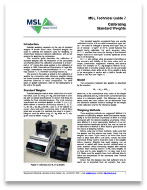
Another National Metrology Institute (NMI) that publishes great content for estimating measurement uncertainty is the Measurement Standards Laboratory (MSL) of New Zealand.
Their website has a lot of useful guides that you can use to find sources of uncertainty in measurement and different types of measurement error.
Additionally, their guides are easy to read and understand; even for beginner Metrologists.
Make sure to check out their website next time you calculate uncertainty.
BIPM Key Comparison Database
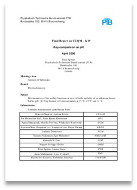
When estimating uncertainty, it would be nice if you could look at other laboratories uncertainty budgets. Well, you can.
If you search the BIPM Key Comparison Database (KCDB), you will find interlaboratory comparison reports for many of the National Metrology Institutes. In these reports, you can find uncertainty budgets and estimates.
With this data, you may be able to identify some new sources of uncertainty in measurement for your uncertainty analysis.
EURAMET Calibration Guides
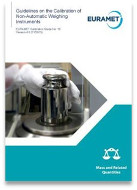
The EURAMET website gives you access to a lot of calibration and technical guides.
Inside these guides, you will find detailed information related to calibration and sources of uncertainty in measurement. This makes the EURAMET website a great resource to bookmark.
You should definitely check their website and guides. You will not regret it.
Metrologia Journal
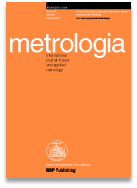
Metrologia is a metrology journal published by BIPM that can contain some valuable information related to your measurement discipline.
This is helpful when performing uncertainty analysis, but you may have to conduct some research to find what you are looking for. It is similar to the NIST Journal of Research.
Access to their journal is not free.
However, if you have access to a college or university library, you can get access to Metrologia online for free.
Cal Lab Magazine
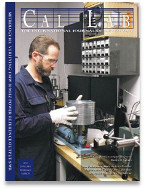
Cal Lab Magazine is another periodical resource that you can use to find sources that contribute to measurement uncertainty.
The magazine is published quarterly and contains articles related to calibration and metrology.
Inside some of their articles, you will find information related to measurement uncertainty, which could help you find new contributors for your uncertainty budgets.
Best of all, the subscription to this magazine is free. Additionally, you can access it both in print and online.
So, I suggest that you subscribe to Cal Lab Magazine today. You can get your subscription here.
Measure Journal
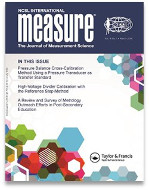
Measure Journal is another periodical published by the National Conference for Standards Laboratories International (NCSLi).
It is only available to NCSLi members. So, to get a subscription, you will need to become an NCSLi member.
Inside this magazine, you can regularly find great articles related to calibration methods and uncertainty analysis. Therefore, you are likely to find a few new contributors to measurement uncertainty.
Overall, Measure magazine is a great publication that I think you should read.
How to Find Sources of Uncertainty Faster
3 Things You Can Do Right Now
Now that you have 15 new resources to find significant contributors to uncertainty in measurement, I am sure that you would like to access them quickly next time you calculate uncertainty.
Therefore, I recommend that you do these 3 things;
1. Bookmark the links to these websites,
2. Create a digital archive of reference material you find useful, and
3. [ninja_forms_modal_form id=89 text_link=’Download my cheatsheet’]
Improving your ability to access this information will dramatically improve your ability to estimate uncertainty faster.
Create A Digital Archive of Your Reference Material
Personally, I recommend that you create a digital archive of your reference material. Each time you find new resource or guide related to measurement uncertainty and your measurement functions, save it!
Then, put it a digital archive (i.e. on your computer, the cloud, etc.) that you can access at a later date. If you organize your files and folders by measurement function, it will make it easier to find the right file when you need it.
PRO TIP: Add tags to your electronic files. It will help you locate the right documents faster.
Five years ago, I started a digital archive and it has saved me hours (probably days) of research. Trust me, create a digital archive! You will thank me later.
Conclusion
Finding sources of uncertainty and different types of measurement errors is a difficult process that requires a lot of your time and effort. If you saw the graph at the beginning of this guide, you will quickly realize that it can consume nearly 75% of the time it takes you to perform uncertainty analysis.
That is significant!
In this guide, I have given you 15 resources that you can start using next time you estimate uncertainty in measurement. These are some the references that I routinely use when calculating uncertainty.
With this information, you should be able to easily find new uncertainty contributors for your measurement functions.
Make sure you [ninja_forms_modal_form id=89 text_link=’download this cheatsheet’] so you can easily access these reference materials.
I promise that it will save you a lot of time and effort.
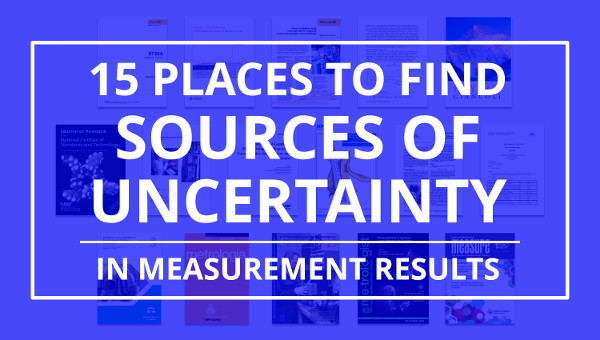




5 Comments